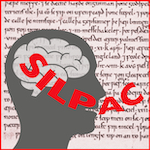P2: Priming in contact-setting bilinguals and monolinguals as a driver of language change, University of Mannheim
Team
Description
This project investigates structural priming across different speaker populations and environments to test its potential as a psycholinguistic mechanism underlying contact-induced language change. The overarching objective is to establish a causal link between transient changes in individuals’ language processing and lasting diachronic changes at the societal level.
If priming underlies contact-induced language change, it must be shown that its effects are sufficiently persistent to afford sustained changes to the structure of the input, and extend to both monolingual and bilingual language users, hence allowing for successful transmission at the wider community level. The guiding hypothesis of this project is that bilingualism in language-contact settings, particularly in adolescent speakers, provides propitious conditions for meeting both requirements. By systematically comparing the nature of priming effects across speaker populations and language environments, the project contributes to identifying potential agents of change.
-
What language settings are most susceptible to persistent priming and thus constitute catalysts of language change?
-
Does priming differ in the magnitude and longevity as a function of speaker-specific variables (age and language background)?
By adopting a psycholinguistic approach to central questions in historical linguistics, both research questions address key feature 1. RQ2 centers on identifying agents of change and thus informs key feature 2. Further, the project contributes to elucidating key feature 3 (the role of the lexicon in argument structure) by examining priming in the context of motion event lexicalization. The experimental approach pursued in the project, specifically answers to RQ2, will feed into the development of new methods and learning models tailored to language change, thus informing key feature 4.
